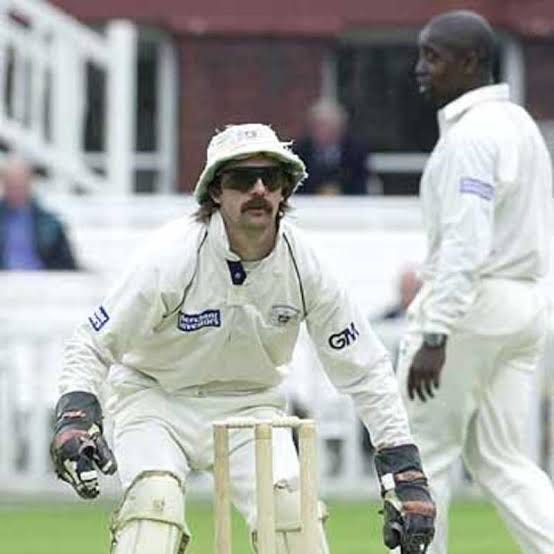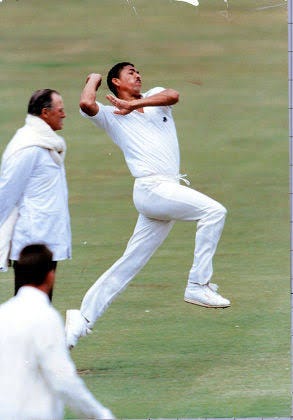“THE scenery was inspiring, the cricket banal. Imagine, if you will, a cricket match in Glen Coe, with Ballachulish etched in craggy splendour against a deep blue sky on the finest day of a highland summer.
Imagine, also, a pitch the pace of Weston-super-Mare`s and an outfield like a well-tended recreation football ground.You will know then, that Paarl was a beautiful place in which to play or watch cricket in the midst of a British winter, but also an unsatisfying one.”
That was the opening paragraph of the Telegraph’s report after the first day of England’s four-day match against Boland in December 1995, thirty years ago, penned by the late, great Christopher Martin-Jenkins.
England batted first without their captain, Michael Atherton, who had wisely and deservedly given himself the game off after his match-saving 185* a few days earlier in the second Test at the Wanderers. He had heard about the fly-fishing opportunities in the Drakenstein mountain streams and decided to take advantage.
The tourists’ 402-8 from 153 overs was grizzly to watch but personally satisfying for wicket keeper Jack Russell, Atherton’s ally for over five hours in Johannesburg, who scored an unbeaten 129, mostly in singles. Notoriously parsimonious left arm spinner, Claude Henderson, had figures of 49-17-88-2. His counterpart, Richard Illingworth, made 57* batting at number 10.
Boland’s reply became comically bleak, or bleakly comical. The pitch was so slow that even the least adept batsmen were able to defend and occupy the crease for…pretty much as long as they wanted. There were eight scores of between 20 and the 54 scored by Phillip Defreitas who was Boland’s overseas professional that year as they were finally bowled out for 288 in 135 overs. Comfortably the most common mode of dismissal was boredom. By the close of the third day’s play, England were 33-2.
Those of us assigned to cover the match considered any possible alternative but a morbid sense of duty prevailed and we turned up. It transpired that the players felt the same way and, in a rare moment of common sense, euthanasia was used to end the game as a draw. On arrival we were informed that the fourth day would now be used to play a 50-over game. CM-J wrote that the match was called off because “…riga mortis had set in.”
Freshly fished and rested, Atherton anchored England to 244 all out with a ‘measured’ 77 and the home side were bowled out for 170. Swashbuckling captain Adrian Kuiper made 54 having cunningly been dismissed for five in the first-class game to avoid the trudgery.
There was no incentive to adapt to conditions and score quickly. It was still the era in which “…every game for your country is important” so players were dictated to by the conditions. There is a sense of dark humour on reflection.
If you haven’t made the connection yet, I don’t blame you. Almost 30 years to the day we’ve just seen an SA20 match played in similar conditions and it was riveting. Conditions are what they are the Boland Stadium – the groundstaff don’t set out to produce ‘low and slow’ - and the Paarl Royals have embraced them. Joe Root played one of the most skilful T20 innings you could ever see to get his team to 140-4. It was worth 190 at ‘standard’ venues.
The notion that ‘flat’ wickets are essential for entertaining T20 matches is marketing bollocks. ‘Crowds’ aren’t beholden to fours and sixes, they are drawn to close contests and skill. Low-scoring matches in challenging conditions routinely deliver closer and more exciting finishes than boundary-hitting contests on flat pitches.
Six-hitting is just one of many skills which can make T20 cricket compelling. The Paarl Royals became just the fourth team in league, franchise or international T20 cricket to bowl all 20 overs of spin. Two Sri Lankan club games and Malaysia against Bangladesh in the Asian Games of 2023. If T20 cricket is the future, perhaps its success depends on making it different, at least from time to time.
It was wonderfully different at Paarl, and the crowd did not seem remotely disappointed by the lack of boundaries. Quite the opposite. Each one was cheered like a goal in football. Less is more. Pretty much always has been in sport.
*I’m completely flattered by over 300 subscriptions in the last month or so, one of which was a paid subscription. Totally get it. I know £4 a month isn’t much, but there are always concerns about subscribing to anything. If you have subscription-phobia, as many of us do, but you appreciate my columns, you can always do the ‘buy-me-a-coffee’ thing, also just £4. And I will be enormously grateful. Love to all…








Nice to reminisce about late CMJ,iconic BBC TMS Caller and a cricket tragic like none else ! Lovely read.
T20 isn’t just fireworks and franchises. Its beauty lies in tension - a yorker, a clever slower ball, a captain’s gamble. Let’s not Marvel-ify cricket.